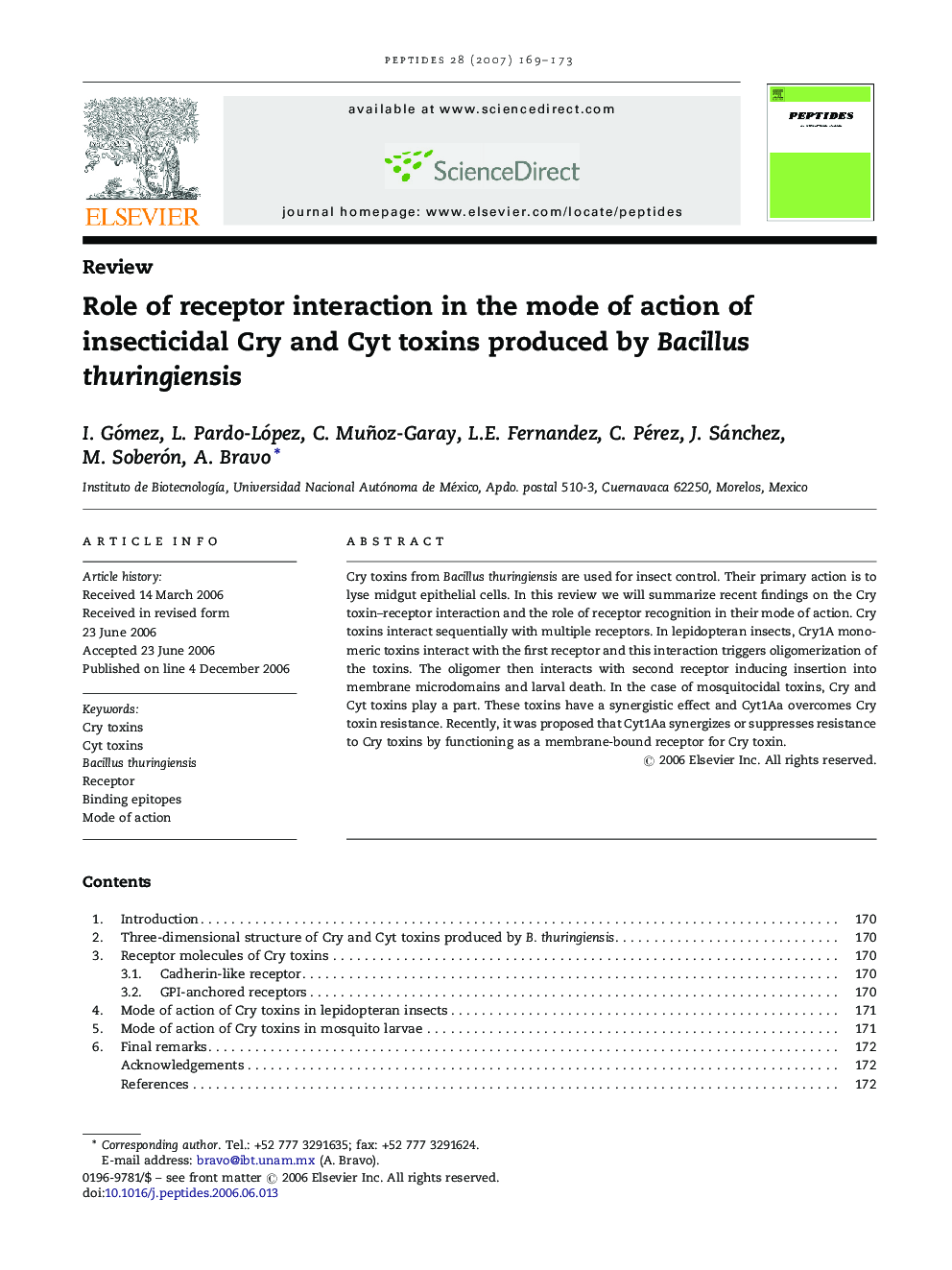| Article ID | Journal | Published Year | Pages | File Type |
|---|---|---|---|---|
| 2008580 | Peptides | 2007 | 5 Pages |
Cry toxins from Bacillus thuringiensis are used for insect control. Their primary action is to lyse midgut epithelial cells. In this review we will summarize recent findings on the Cry toxin–receptor interaction and the role of receptor recognition in their mode of action. Cry toxins interact sequentially with multiple receptors. In lepidopteran insects, Cry1A monomeric toxins interact with the first receptor and this interaction triggers oligomerization of the toxins. The oligomer then interacts with second receptor inducing insertion into membrane microdomains and larval death. In the case of mosquitocidal toxins, Cry and Cyt toxins play a part. These toxins have a synergistic effect and Cyt1Aa overcomes Cry toxin resistance. Recently, it was proposed that Cyt1Aa synergizes or suppresses resistance to Cry toxins by functioning as a membrane-bound receptor for Cry toxin.
